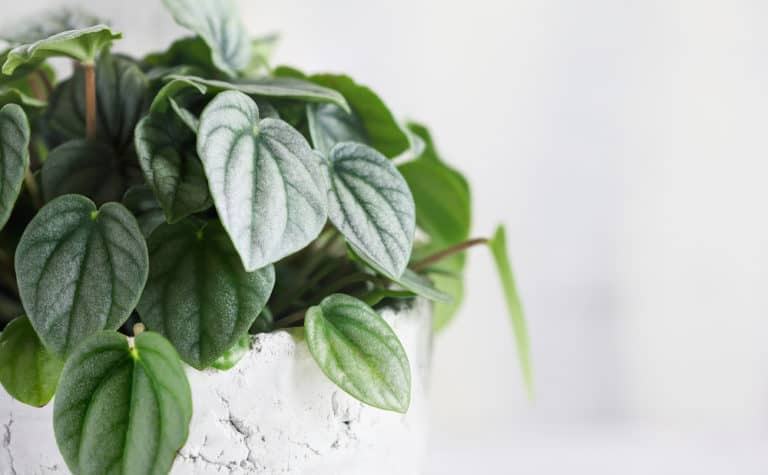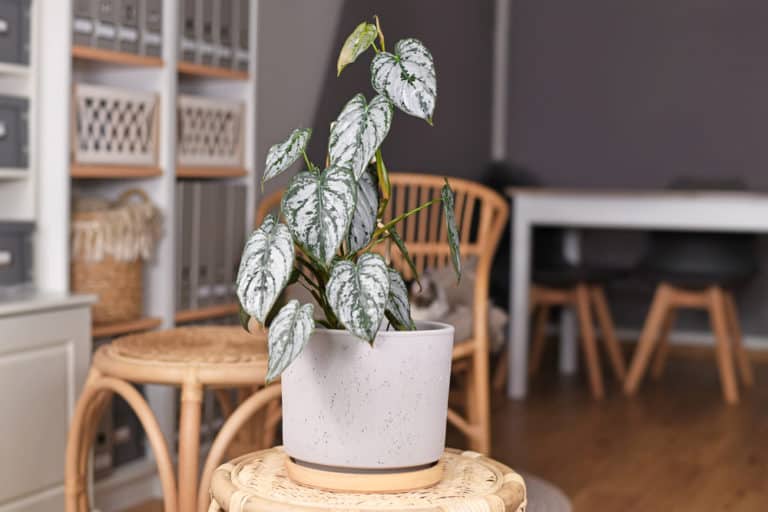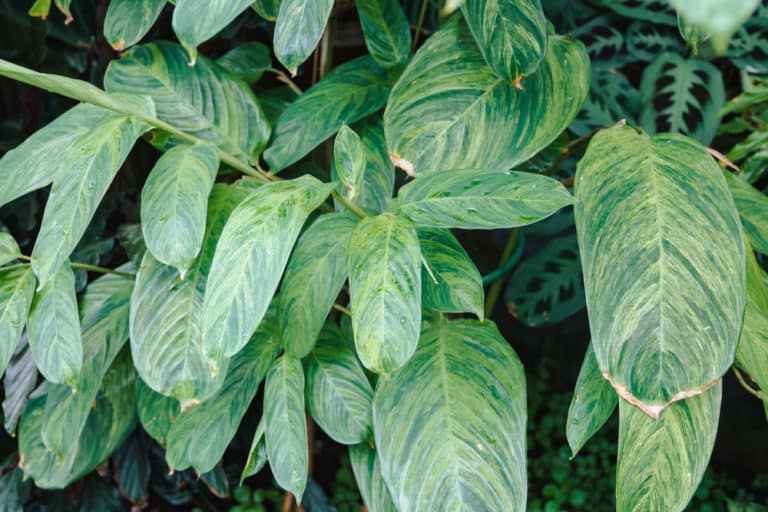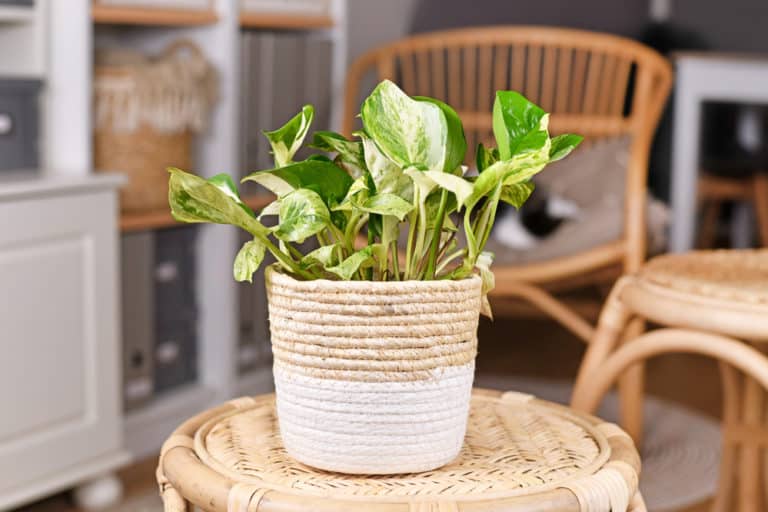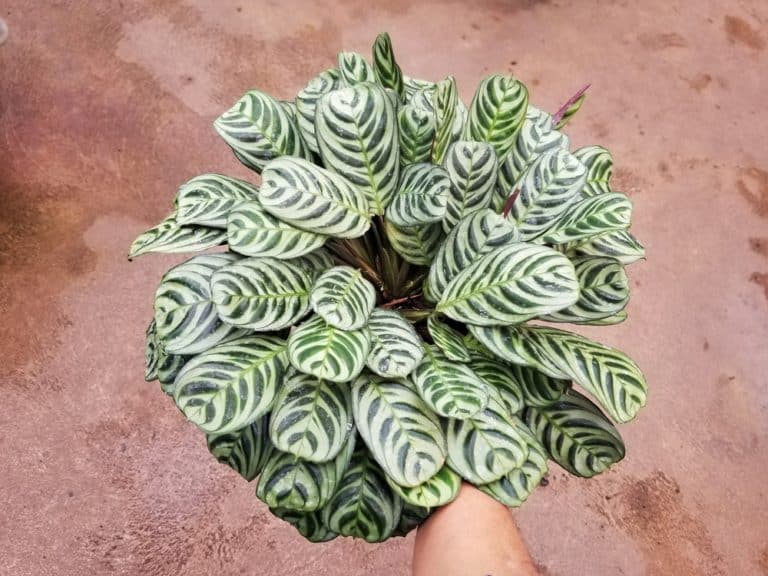Agave Attenuata ‘Fox Tail Agave’ Care Guide (2024)
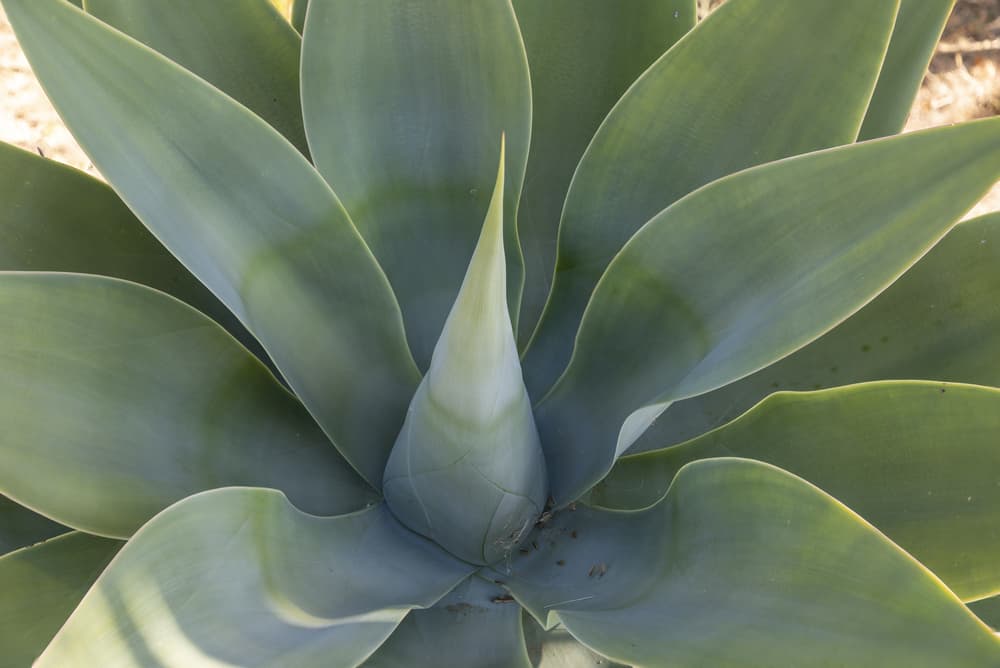
The thing about Agave attenuata is that it makes a perfect focal point in your landscape. Those fleshy, green leaves form a rosette which are arching back slightly, looking like a large, open flower.
Luckily, this fox tail succulent is easy to care for. We’ll teach all the basics, so keep reading.
Plant Profile:
Common Name: Fox Tail Agave, Swan’s Neck Agave, Lion’s Tail Agave, Dragon Tree Agave, Century Plant
Scientific Name: Agave attenuate
Type: Succulent
Origin: Mexico
Habitat: Stony slopes, ledges and rocky cliffs
Size: 2 to 3 feet tall and 3 to 4 feet wide
Toxicity: Non-toxic to cats and dogs
Colors: Silver-grey
Blooms: Yellow-green to white
Plant Care:
Light: Full sun
Watering: Low
Temperature: Sensitive to temperatures below 50oF (10oC)
USDA Zone: 9b to 11b
Air humidity: Low humidity
Soil pH: 6.6 to 6.8 (slightly acidic)
Fertilizing: Dilute, balanced fertilizer once during the growing season
Propagation: Division of offsets
Re-Potting: Once every two years
Pruning: Removal of basal leaves and offshoots
What’s Unique About Agave attenuata?
Agave attenuata plant is already striking with those rosette foliage. But what makes it more appealing is the appearance of its tremendous flowers. You’d be lucky if you ever come across those showy blooms. They look like a long flower spike that curves and drops to the ground just like the tail of a fox.
A fox tail agave flower appears only once in the plant’s lifespan. It will take about 10 to 20 years, though. And it appears only during spring or summer seasons. This attenuata species is indeed a unique and gorgeous addition to a tropical landscape whether indoors or outdoors.
Appearance
The Agave attenuata appearance is very unique once the flowers are present. The foliage alone is similar to other agave species. However, come the flowers and you’ll see how magnificent they become. We’ll describe the plant’s appearance in detail in the following parts, starting with the foliage then the flowers.
Foliage
The foliage of Agave attenuata is known to be evergreen. Those fleshy leaves are ovate in shape and soft in texture. Since it’s a succulent plant, the foliage is characterized by having the ability to store more water. The colors of the leaves can range from silver grey-green to blue-green or even yellowish-green.
The foliage forms a whorl pattern. If viewed from afar, it resembles the shape of an open flower. Although those leaves look rigid and pointed, it’s quite the opposite. Once you touch the blades, you’d discover that they’re flexible. We can therefore say that Agave attenuata plants are people friendly.
Flowering
The flowers of agave foxtail are the most fascinating. If you’ve planted this succulent 10 to 20 years ago, you’d be blessed by a long spike of inflorescence. They have the colors of green, white, and yellow. However, flowering is very rare as it only occurs once in its lifetime.
The inflorescence appears at the center of the rosette forming a tall arch that could reach up to 5 to 10 feet in height. The curve then drops to the ground and then makes another bend upward. The Agave attenuata shape resembles that of a foxtail, thus, the name.
Size and Growth
The size of Agave attenuata can reach up to 2 to 3 feet tall and 3 to 4 feet wide. Outdoors, they can grow this big. So, make sure to give them plenty of space if you’re planning to include them in your garden. They also produce offshoots on its base so expect that they’ll become dense.
Growing Agave attenuata will take time. This plant has a slow growth rate like most succulents do. You have the option to plant them in pots for indoor setups. That way, maintaining your agave to a smaller size will be a lot easier.
Fragrance
Even though the flowers are extravagant in appearance, do not expect any Agave attenuata fragrance to charm you. The plant has no fragrance at all, neither the leaves nor the blooms.
However, this is good news to anyone who is quite sensitive to fragrant odors. If you have asthma conditions, we know you can relate. Worry not because you can safely keep this plant indoors. They won’t trigger any form of odor sensitivity at home.
On the other hand, if you are looking for a pleasant-smelling agave, go for Agave schottii. This species produces flowers that are sweet and fragrant.
Toxicity
As far as Agave attenuata toxicity is concerned, worry not. This succulent agave is considered non-toxic to both humans and pets. However, it could have a mild poisonous effect once sufficient amounts are ingested.
We still recommend that you take caution in handling this agave.
For Humans
Fox tail agave toxicity isn’t a serious problem for humans. Although, the leaves contain sap that could have a mild poisonous effect. This wouldn’t be a problem if you won’t ingest those sap. And why would you?
Nevertheless, always take extra caution. Make sure to use your gloves when handling the leaves. This will prevent you from possible skin irritation. Make sure to remind the kids around not to play with this plant more so taste any part of it. This would help you save a lot of trouble in the future.
Plants are lovely but they can also be dangerous.
For Pets
The same case applies for pets. Once your dogs or cats ingest sufficient amounts of the leaves’ sap, they can be in danger. The mild poison will work to irritate the mouth, the gut, and digestive system of your lovely pets.
To prevent this, just make sure to keep your foxtail agave away from your pets. Place them in a location that they couldn’t reach. If this isn’t possible, it’s better to place your agave outside your home.
If they happen to accidentally chew on your forbidden agave, go and consult your local veterinary for immediate check up on your pets.
Suggested Uses
There are numerous ways to use foxtail agave in designing your garden. You can plant it at the center to serve as an accent to your outdoor landscape. They are great for beds and borders, rock and succulent gardens, too. You can also plant them in patios.
Indoors, you can plant foxtail agaves in decorative pots. Use them to decorate a bare space. This ornamental succulent would definitely suit a large minimalist room. A balcony or terrace is also a good location to decorate with foxtail agave.
You can group this plant with your cacti and succulent collection. They would surely make a fantastic gang!
Agave attenuata Care
There are simple ways to care for Agave attenuata. This plant isn’t a demanding one so do not worry too much. Even if you’re a beginner, there’s a very small chance that you’d kill this agave plant. All you need is provide the best growing requirements specified below:
Light
Agave attenuata light requirements can range from full sun to partial shade. Generally, it prefers bright light so exposure to direct sun for 5 to 8 hours is much favorable. If your attenuata is planted outdoors, then achieving this condition isn’t much of a problem.
If you’re planning to grow your fox tail succulent inside your homes, just make sure to place it in the brightest location. Be careful though in moving your agave from indoors to outdoors. If the transition is abrupt, your plant may suffer from stress.
We recommend that you place your agave under partial shade if you move it outside. Slowly, expose it to brighter light every day. This way, foxtail adaptations would be easily facilitated.
Watering
The most critical part of fox tail agave care is providing just enough water. Since this plant is succulent, it’s very sensitive to overwatering. It’s better to keep the plant on the dry side in order to avoid the perils of root rot.
Watering of Agave attenuata can be done once the soil is dry. This could occur once a week during the hot seasons. Keep the soil well-saturated and drain it well. During winter, reduce watering to only once a month. The plant has enough water reservoirs in the form of its foliage so they’ll survive the drought conditions.
Temperature
Maintaining your Agave attenuata temperature to above 50oF (10oC) is important. This agave species is not frost hardy so any temperature that goes below the threshold could bring serious damage.
Remember that it has fleshy leaves. When the temperature gets really low, those leaves could freeze resulting into damaged tissues when thawed after. It’s recommended to bring your potted fox tail succulent indoors when the cold season comes.
Find a well-lit area, preferably a sunny window or a room with fluorescent lights available. Since this plant loves a warm environment, you may provide additional insulation around it to prevent it from freezing.
Air Humidity
The requirement for Agave attenuata humidity is very simple. Just keep it low and your plant shall be happy. Succulents are well-acquainted with dry conditions. So, they don’t really mind when the environment gets less humid.
An average humidity inside your homes is also tolerable. Just make sure to avoid placing it near your kitchens or bathrooms. These places are normally high in humidity so they aren’t the best locations.
If you’re grouping your plants, keep your Agave attenuata succulent away from the tropical ones. These plants love high humidity. If you mix them with your agave, the added moisture in the air isn’t going to be beneficial to your plant.
Soil
Another important aspect of Agave attenuata care is preparing the right potting mix. A well-drained soil is most preferred. Any cacti and succulent mix will do for potted agaves. However, if planted in the ground, you have to add cacti mix sand and grit on the soil to make it loose and porous.
A good potting mix will give ease to the fox tail agave watering. When there’s enough soil and pot drainage, overwatering will no longer be a problem.
Also remember that the Agave attenuata soil requires a slightly acidic pH which ranges from 6.6 to 6.8.
Fertilizing
Remember that Agave attenuata growth rate is slow. This is because they aren’t much of a heavy feeder. Naturally, they need a very long period of about 10 to 20 years to fully mature. So, don’t go mad and over fertilize your agave because you’re desperate to see it grow.
Your fox tail agave would love to have a feeding of diluted, balanced fertilizer once during the growing season. In most cases, this feeding is enough for the plant to have a steady supply of nutrients. No feeding should be done during winter seasons because your plant has just entered a dormant stage.
Propagation
Propagation of Agave attenuata is rather an easy task. This plant produces numerous offshoots on its basal portion. Those small agave babies could be detached from the mother plant and potted separately to grow as another plant.
If you have the chance, you may also collect Agave attenuata seeds from the pods during spring or summer. Allow them to dry for several days. Those seeds can be used to germinate new agave plants.
However, seed collection can be challenging since Agave attenuata flowering rarely occurs. This is why most gardeners prefer the vegetative method of propagation. Thanks to those little offshoots!
Re-Potting
Since this species is a slow grower, re-potting Agave attenuata can be done once in every 2 years only. It doesn’t mind getting a little pot bound as well. Thus, transferring it to another container isn’t an urgent matter to attend to.
But just in case repotting can no longer be avoided, we recommend that you use shallow pots for your foxtail plants. This is because they have shallow root systems. Therefore, using deep containers wouldn’t give them any advantage.
Use a well-draining mix to replace the depleted soil. Once transferred, water the repotted agave thoroughly. Let it stay under shade for a few days to avoid stress.
Pruning
There’s a need to occasionally prune your foxtail agave to remove the dead and brown leaves at the basal portion. Trimming them off would help maintain the plant’s beauty. Make sure to remove the whole leaf rather than cutting a portion of it.
Apart from aesthetics, pruning Agave attenuata is also necessary to maintain the plant’s health. When there are too many offshoots, the plant gets crowded. They compete for water and nutrients. As a result, their growth is even more sacrificed.
Thus, regular removal of offshoots is also advised. Maintain only the mother plant and a number of offshoots.
Agave attenuata Common Problems
We know that this plant is low maintenance. However, we advise that you be ready for possible Agave attenuata problems that you may encounter in the future. There are a number of pests and diseases that you have to watch out for.
Pests
Snout weevil, soft scale and the cactus longhorn beetle are the common Agave attenuata pests. These organisms attack the plant to look for food. They munch on the plant’s tissue, sucking the fluids, and leaving the plant with brown spots and lesions.
To manage these pests, we recommend that you regularly check your agave. Once spotted, manually remove them using tweezers. However, if their population is huge, it’s time to use a broad spectrum insecticide.
Infected agave plants are most likely to recover after being attacked by these organisms. Also, if the growing conditions are maintained, such pests won’t thrive.
Diseases
Agave attenuata diseases may include anthracnose, root and crown rot and Phyllosticta pad spot. These diseases are generally common for all agave species. They are caused by fungi. Symptoms include lesions, black and brown spots and rot on the plant’s foliage. Most of the time, the roots get damaged too.
These diseases are often a result of consistently damp conditions. Low temperature and a wet environment favors the growth of pathogens. If you’re not careful in watering your agave, such diseases could easily develop.
To prevent these diseases, make sure not to overwater your agave plant. Drain excess water every time.
Growing Problems
There’s nothing much trouble encountered when growing foxtail agave. This plant is generally sturdy and low maintenance. As long as the growing conditions are maintained, your agave will most likely flourish.
The only things that you have to constantly avoid are over watering and low temperatures. Such a combination is a deadly thing not only for agaves but for most succulents. If the climate in your location isn’t suited for raising foxtail agave, then, don’t push it.
Only USDA Zones 9b to 11b have conditions well-adapted for growing fox tail agave. Always check this before buying a plant or two!
FAQ
How do you care for Agave attenuata?
To keep your foxtail agave happy, provide plenty of bright light. Keep it protected during times of low temperature. And, give it just enough water.
Can Agave attenuata take full sun?
Yes. In fact, it prefers exposure to full sun. It certainly loves bright light and warm temperatures. Such conditions are necessary to grow Agave attenuata.
What is the common name for Agave attenuata?
The range is wide for Agave attenuata common name options. Fox Tail Agave, Swan’s Neck Agave, Lion’s Tail Agave, Dragon Tree Agave, and Century Plant are just a few.
Is Agave attenuata poisonous?
The sap of attenuata’s leaves are considered mildly poisonous to humans. If ingested in sufficient amounts, it could cause serious irritation. So, just be careful.
Is Agave attenuata poisonous for pets?
Just like in humans, Agave attenuata is also mildly poisonous to pets. The sap of the leaves is the one responsible for that. So, keep your pets away.
Do you trim Agave attenuata?
Old and brown leaves can be trimmed off from the base of your Agave attenuata. This is the type of pruning that your agave needs.
How fast does Foxtail Agave grow?
This particular agave species is a slow-grower. It would take about 10 to 20 years for foxtail agave to reach a mature stage. So, don’t hurry.
How often does Foxtail Agave bloom?
Foxtail agave flowers only once in its lifetime. It’ll occur only when the plant reaches a mature stage. The flowers would appear during spring or summer.
Does Foxtail Agave die after flowering?
No. Unlike other succulents, foxtail agave could remain alive even after it produced the flowers. However, don’t expect that Agave attenuata blooming will happen again.
Can you cut off Foxtail Agave and replant?
Yes, this is possible. The only downside is that rooting will take time. If the foxtail agave is already huge, rooting will take even longer.
Can Foxtail Agave grow in pots?
Of course! Foxtail agave can grow in any pot. However, we recommend that you use the shallow ones. Their root system is shallow, that’s why.

